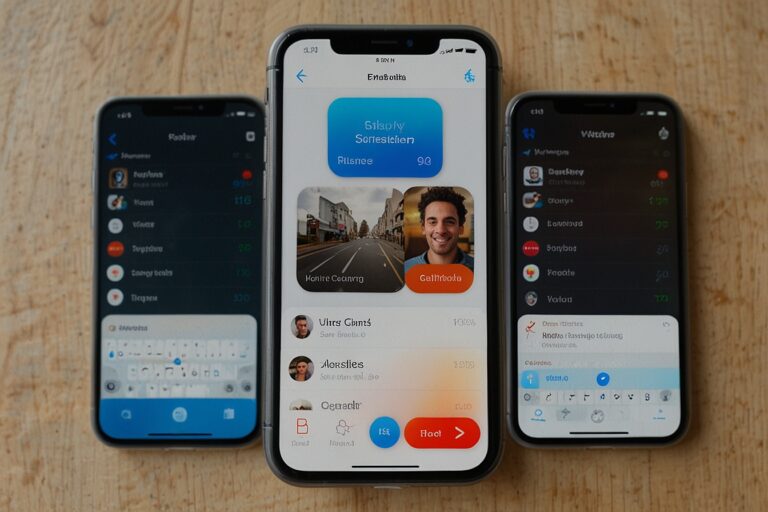
TL;DR
- Blok, an AI startup founded in 2024, is redefining app testing by using AI-powered user personas to simulate feature usage before launch.
- The company has raised $7.5 million in funding from backers including MaC Venture Capital and employees from Meta, Google, and Discord.
- Unlike A/B testing tools like Optimizely or Amplitude, Blok offers a predictive layer of simulation before any code is deployed.
- Customers upload event logs and Figma prototypes, and Blok’s personas simulate how real users would behave.
- The company is currently in private beta, targeting healthcare and finance startups with high user experience stakes.
Simulation Before Execution: Blok’s AI-Led Shift in App Testing
In a market increasingly dominated by rapid shipping and AI-assisted development, Blok is introducing a novel paradigm—predictive product testing using AI-generated user personas. Rather than waiting for live A/B test results or post-launch feedback, startups can now simulate how real users might interact with a feature, long before a single line of production code is written.
The founders, Tom Charman and Olivia Higgs, launched Blok in 2024 after building several startups across travel and learning verticals. They saw firsthand how time-consuming and error-prone traditional testing methods could be.
Now, with $7.5 million in venture funding, Blok is emerging from stealth and drawing comparisons to established analytics platforms—except this time, it’s playing offense rather than defense.
Key Funders and Strategic Vision
Blok has raised funding in two rounds:
- $5 million seed round, led by MaC Venture Capital
- $2.5 million pre-seed, backed by Protagonist, Weekend Fund, and Blank Ventures
Notably, individual investors include employees from Google, Meta, Discord, Snapchat, Pinterest, and Apple—an indication of the deep product-market interest in early validation tools.
Marlon Nichols, Managing General Partner at MaC Venture Capital, summarized the firm’s conviction:
“Blok gives teams the ability to predict user behavior before a single line of code is written. That’s a fundamental shift from reactive testing tools like Amplitude.”
Key Facts About Blok
| Metric | Details |
| Founded | 2024 |
| Founders | Tom Charman, Olivia Higgs |
| Total Funding | $7.5 million |
| Investors | MaC VC, Protagonist, Weekend Fund, employees from Google, Meta, etc. |
| Product Status | Waitlist only (private beta) |
| Core Markets | Healthcare, Fintech |
| Revenue Target (2025) | Mid-single-digit millions |
| Pricing Model | SaaS (compute-balanced) |
TechCrunch, Blok company disclosures
Blok vs. Traditional Testing Tools
Unlike analytics platforms such as Optimizely or Amplitude, which analyze user behavior after deployment, Blok’s simulation engine tests user journeys before code is written. Product teams start by uploading:
- Event log data from Mixpanel, Amplitude, or Segment
- Figma designs and the hypothesis behind the feature
Blok’s AI then generates user personas based on historical behavioral modeling. These personas simulate how a variety of users—casual browsers, power users, or confused newcomers—might engage with a new feature.
From Waitlist to Workflow: How It Works
Once the simulation begins, Blok delivers:
- Persona-level feedback on success paths, drop-offs, and confusion points
- A summary report highlighting what worked and what didn’t
- A chatbot assistant (naturally, in 2025) to answer custom queries
This process enables teams to iterate and improve features before committing engineering resources to full implementation.
“We’re eliminating the need to release half-baked experiments in production just to see what happens,” said co-founder Tom Charman.
Targeting Critical Sectors: Healthcare and Finance
Blok is currently focused on verticals where product friction can have high costs—especially finance and healthcare. In these fields, “move fast and break things” is no longer a viable strategy.
“There’s a higher bar for interface design,” noted Olivia Higgs. “People now interact with tech through chat and voice, and visual elements must not disrupt that flow.”
Blok offers product teams in these regulated spaces the confidence to test aggressively without risking public missteps.
Meeting Developer Needs Head-On
The Blok team interviewed over 100 product engineers to understand the bottlenecks in testing today. The feedback was consistent:
- Small startups lack cohorts to test new features
- Large companies want to avoid bloating apps with unused features
Blok gives both the data-driven visibility and the predictive confidence to improve UX at scale.
What Comes Next for Blok
The company is currently balancing compute costs while maintaining high-quality simulation models. Its SaaS pricing model is being fine-tuned as it prepares to expand access beyond the waitlist.
By aiming to hit mid-single-digit millions in revenue this year, Blok is signaling both demand traction and unit economics discipline—a rare combination for AI infrastructure startups at this stage.





